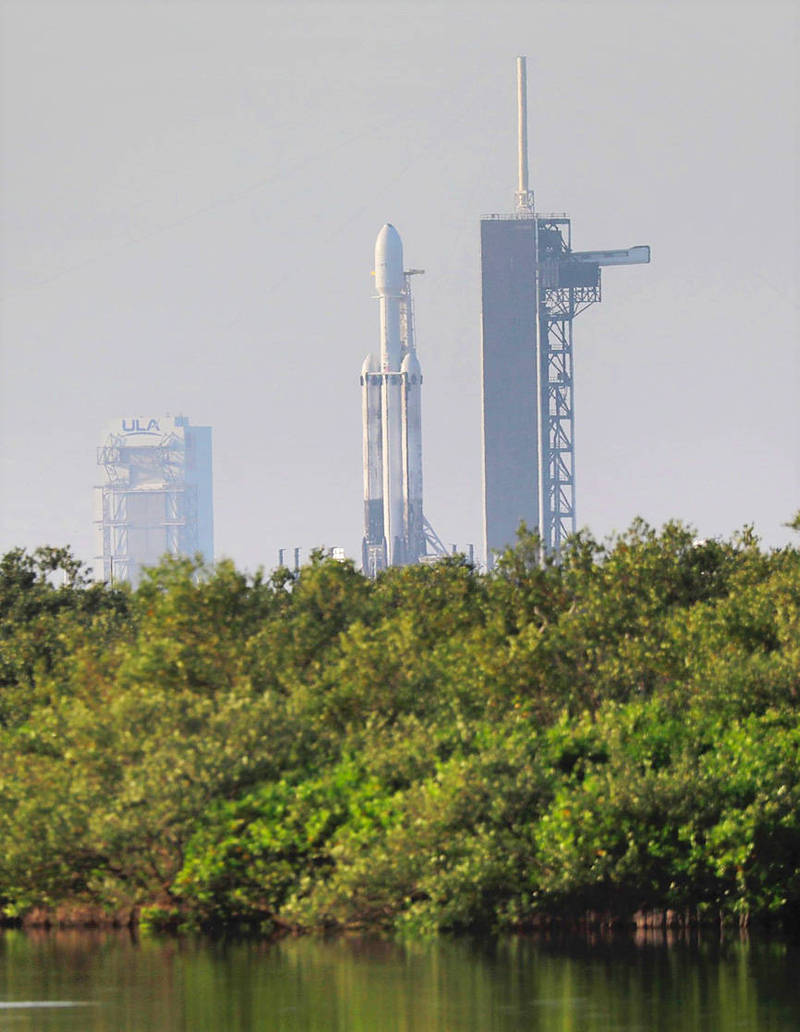《TAIPEI TIMES》 Taiwan, US sign MOU on satellite collaboration

A SpaceX Falcon Heavy rocket carrying the Formosat-7 satellite awaits launch at the Kennedy Space Center in Cape Canaveral, Florida, in June 2019. Photo courtesy of the American Institute in Taiwan
By Lu Yi-hsuan and Jonathan Chin / Staff reporter, with staff writer
Taiwan and the US have signed a memorandum of understanding (MOU) to continue bilateral scientific and technological cooperation on the Formosat-7/COSMIC-2 satellites, the American Institute in Taiwan (AIT) said yesterday.
The de facto US embassy in Taiwan announced on Facebook that it signed the MOU with the Taipei Economic and Cultural Representative Office in the US this February to extend the program.
Since its launch in 2019, the program has “exemplified the close cooperation and strong partnership” between the two countries, and provided “a vital new data source contributing to space weather prediction and helping to mitigate risks to critical infrastructure globally,” the AIT said.
This extension of the program would mark “a new era of great cooperation between the United States and Taiwan,” it said. “The whole world will continue to benefit from the ongoing US-Taiwan scientific engagement.”
The National Space Organization (NSPO) has said that the Formosat-7 is a highly reliable constellation of weather observation satellites it established together with the US National Oceanic and Atmospheric Administration as a follow-up to the Formosat-3 program.
The US is responsible for satellite launches, payloads and the deployment of ground receiving stations around the world, while Taiwan is responsible for the design and integration of systems, the development of six spacecraft and conducting mission operations, the NSPO said.
The constellation was launched into space from the Kennedy Space Center in Florida on June 25, 2019, using a Space Exploration Technologies Falcon Heavy rocket.
This story has been corrected since it was first published.
新聞來源:TAIPEI TIMES
















